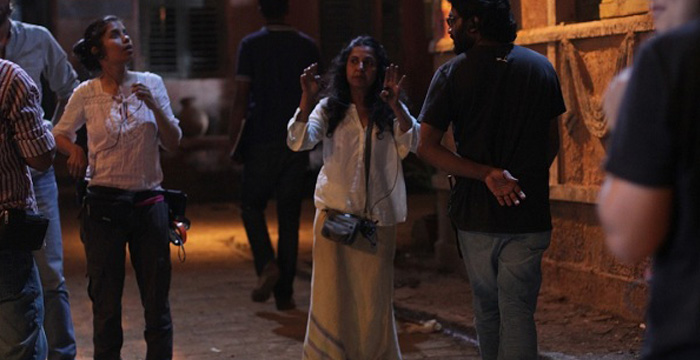The axiom ‘Actions speak louder than words’ has now changed to ‘Visuals speak louder than words’. Most of the content we consume today has been converted into the visual form to create a stern impact. And it works for good as visuals are remembered and recollected frequently by most of us. What makes these visuals effective is the kind of production design and art direction that goes in the setting up of the whole scene. AnimationXpress interacted with production designer Vandana Kataria to know about the creative elements of production design and the artistic tentacles of art direction.
What was your inspiration for getting into Art Direction and Production design?
I really had no intention to become a Production Designer. I graduated from the National Institute of Design in the the field of Film and Visual Communication. I always wanted to direct. I was directing tiny little commercials, but nothing in the big league. Roughly in 2004/2005 I had a desire to work on feature films. I met Dibakar Banerjee who had finished Khosla Ka Ghosla and started assisting him on commercials with the hope and knowledge that he would soon make his second film, and I could perhaps work on it.

When did you decide to get into art direction? Was it accidental or planned?
Often in our commercial work together, we wouldn’t find Art Directors, so I would end up being the Assistant Director, the Art Director, and execute the post production on the commercials. Thus when Dibakar started working on Oye Lucky, it was already kind of understood that I would be the first Assistant Director, but then he offered me the role of the Production Designer, and I ended up doing both the jobs on the film.
Can you highlight us with some of your work?
I have designed and executed the 2D animated Title Sequence in the film Oye Lucky! Lucky Oye! and conceived and directed the music video for the title track too. During Shanghai I was asked what I wanted to do on the film, I chose to be a Production Designer over Assistant Director purely because as a PD I have a creative input in the film and I get to say no for certain things. Even now, between each film, I go away to direct commercials or music videos, the most recent being DIVINE’s Jungli Sher music video which was shot entirely on the iPhone.
What does the future of art direction look like for students?
Art Directors act as project managers for the biggest department on any film – the art department. They facilitate the production designer’s creative vision for all the locations and sets that eventually give the film its unique visual identity.
Production designers are responsible for the visual concept of a film, television or theatre production. They identify a design style for sets, locations, graphics, props, lighting, camera angles and costumes, while working closely with the director and producer.
I am a Production Designer, not an Art Director, there is a world of difference. And till filmmakers, Producers, Directors don’t understand the difference, the future is very bleak for Production Designers in India. However it is reasonably good for art directors who have been executing the director’s, DoPs and producer’s vision for many years.
Any words of advice to MAAC students?
Work hard, work because this is the only thing you want to do. Acquaint yourself with the reality. Keep your eyes wide open in your daily lives. Observe people, objects, light, shadow, atmosphere and nature every day. Learn from life around you. Today everybody has the tools, but very few have a vision. Do not become just a good operator of the tools, instead become a visionary of what all can be achieved by these tools.
What do you think about MAAC’s efforts towards nurturing young creative minds?
The National Student’s Meet (NSM) is a great property for knowledge sharing. I believe we can create a culture of more wholesome workshops for students over slightly longer periods, so they can actually learn and take away something special from it. I am quite sure that many of the working professionals from the country and abroad will be more than happy to come conduct some of these workshops as long as it can be planned well in advance keeping the schedules of the professionals in mind.
What was your recent experience at NSM Goa?
I am deeply grateful for being invited. I do like working with students and would love to continue to do so in the future, but with a greater focus towards learning and sharing. Perhaps conduct exercises and workshops, alongside the presentations. I would also prefer students to interact freely and clarify doubts as I personally believe NSM organised by MAAC is a great platform for young students.

